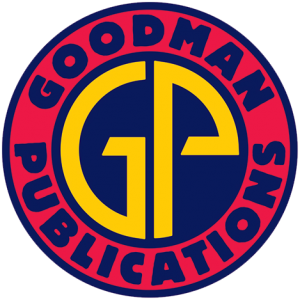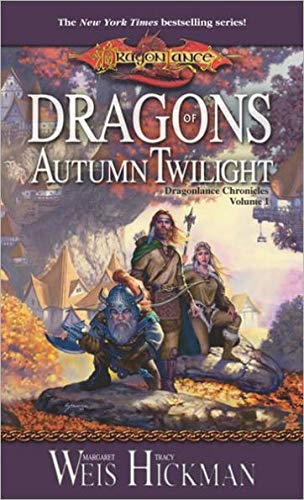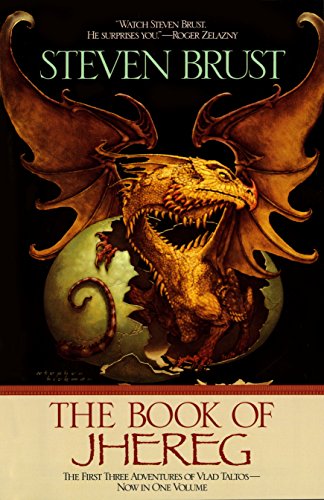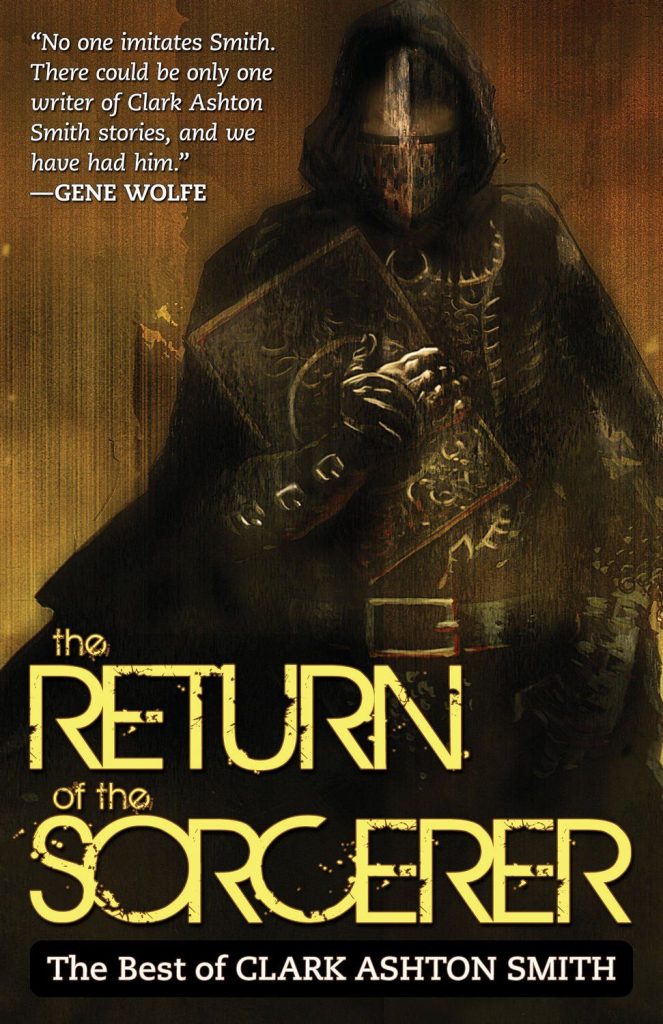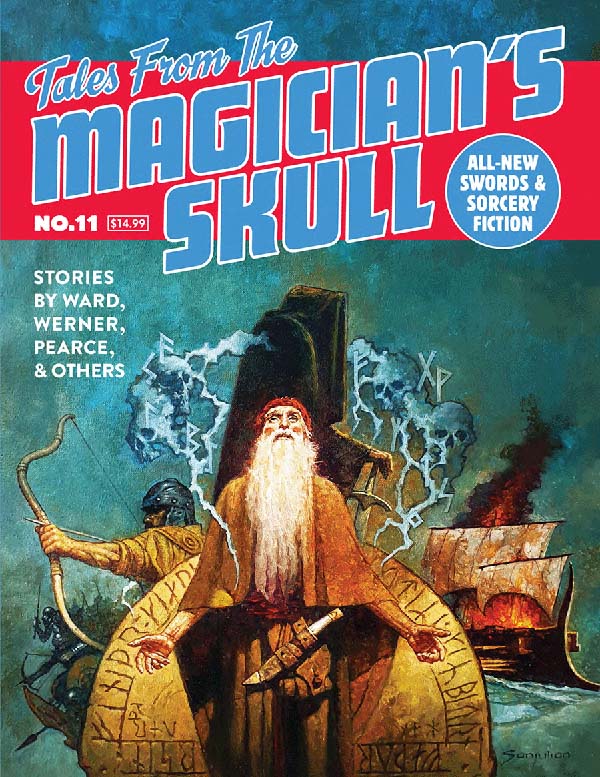Where to Start With American Fantasy Series
by Bill Ward
While J.R.R. Tolkien may be the most famous and ubiquitous of fantasy writers, introducing generations of readers the world over to fantasy fiction through The Hobbit and influencing the way such stories are forever told with his masterwork, The Lord of the Rings, American letters has perhaps contributed more profoundly to the development of the modern secondary world fantasy story. From the pulpsters of early 20th century magazine fiction that first combined elements of weird horror with historical adventure to create sword-and-sorcery, to later writers adding their distinct stamp to fantasy in a post-Tolkien world, the tradition of American fantasy is a rich and varied one.
The purpose of this brief survey is to highlight classic fantasy series fiction for the curious and eager reader. This is by no means meant as an exhaustive list, but simply as a jumping off point for readers that have heard of the big names, seen the film adaptations, played the tabletop and video games, but have perhaps never been directly exposed to some of the classics of yesteryear.
Items marked with an *asterisk are particularly friendly to young readers.
BARSOOM/JOHN CARTER OF MARS, Edgar Rice Burroughs.
Don’t let the Martian setting fool you, these stories are straight-up pulp fantasy with a science fiction veneer. The granddaddy of the sword-and-planet subgenre of fiction that would attract such luminaries as Leigh Brackett and C.L. Moore, and are the direct inspiration for George Lucas’ Star Wars, Burrough’s Barsoom (Mars) is a land of four-armed green Tharks, beautiful (excuse me, incomparable) princesses, and flying airships. Burroughs had huge success with this series and with Tarzan, making him one of the most popular writers of his day (LA’s Tarzana suburb, where Burroughs resided, is named for his most famous character) His Martian books are still some of the most perfectly paced adventure stories ever written, even when they shade into formula in later books they are classic celebrations of heroism, sacrifice, and daring-do. The place to start is with the first book, A Princess of Mars.
*THE CHRONICLES OF PRYDAIN, Lloyd Alexander.
Classic coming of age adventure of Taran, Assistant Pig-Keeper, who goes from callow youth to mature adult – but don’t confuse this with the chosen one farm boy who becomes the embodiment of unearned power trope employed by lesser writers. Alexander’s series takes inspiration from Welsh myth, its roots in the Mabinogion and Arthurian cycles, and is full of familiar elements such as Fae folk, Druidical wise men, and a Horned King. Taran and his companions work together to defeat a deadly evil, but the series itself is broken up into more episodic installments. The complete set is a bargain.
CONAN, Robert E. Howard.
The first and classic example of sword-and-sorcery fiction, and perhaps the most famous creation on this list, rivaling The Lord of the Rings itself. Howard was a Texan and his two-fisted pulp style explodes with energy. His lone Conan novel, The Hour of the Dragon (aka Conan the Conqueror) makes a fine intro, but it is in his short stories that Howard’s real genius for storytelling emerges, as seen in classics like “The Tower of the Elephant,” and “Black Colossus.” The three-volume set from Del Rey books, beginning with The Coming of Conan is the perfect place to start, as they represent his original work in unaltered form.
*DRAGONLANCE, Margaret Weis and Tracy Hickman.
The first and best of the media tie-in wave of game fiction, young readers already familiar with the tropes of fantasy roleplaying will immediately feel at home in this world, the first trilogy of which is the novelization of a Dungeons & Dragons module series from TSR. But Weis and Hickman’s world of Krynn also offers plenty of surprises and original concepts, appealing characterization, and an epic scope. Far more than the sum of its parts, the original two Dragonlance trilogies can easily stand comparison with many of the other fantasy series of the 80s and 90s that don’t have ‘D&D‘ on the cover.
DYING EARTH/CUGEL THE CLEVER, Jack Vance.
The original American wizard stories – but set in a far, far future Earth that may just as well be a never-never land of the distant past. Vance wrote of lovable and not-so-lovable rogues, sorcerers, and tricksters, and his ideas about how magic worked in his Dying Earth series were the direct inspiration for Dungeons & Dragons spell system. Many of his original short stories, primarily those of Cugel the Clever, were later expanded into fix-up novels and those are most readily available unless you’d like to track down a vintage collection. Tinged with humor, ironic language, fascinating invented cultures and landscapes, delightfully odd proper names, and endless clever twists and turns, all of Vance’s fiction bears his indelible authorial stamp. Vance wrote a great amount of science fiction and one High Fantasy trilogy, but it’s the ‘science fantasy’ of his Dying Earth books that really hit the sweet spot of imaginative fantastical adventure.
*EARTHSEA, Usula K. LeGuin.
One of the earliest major fantasy series to focus on a non-European setting, Earthsea, and in particular its first installment A Wizard of Earthsea, is a coming of age story set in a world of island archipelagos and strong magic. LeGuin, in addition to writing beautiful prose, uses her understanding of anthropology and her science fiction writer’s approach to logical verisimilitude to craft the secondary world of Earthsea, creating a cultural landscape of authentic and interesting non-technological societies. These books don’t comprise a multi-volume epic story arc, but rather a series of linked episodes, but it still makes sense to start with A Wizard of Earthsea, a book that can stand on its own just fine.
FAFHRD AND THE GRAY MOUSER, Fritz Leiber.
Written by the man who coined the phrase ‘sword-and-sorcery’ this long-running series of short stories follows an utterly irrepressible pair of rogues on their adventures in the city of Lankhmar and lands beyond. Humorous, ironic, and playful stories with a dark edge – one of the biggest influences on the development of fantasy roleplaying’s ideas of adventures and rogues. The second volume of their collected stories, Swords Against Death, is perhaps the best place to start. It contains classic stories such as “Two Sought Adventure” (aka “Jewels in the Forest”) and “Thieves House.”
VLAD TALTOS, Steven Brust.
Emerging as a sword-and-sorcery style episodic series during the boom years of fat fantasy epics, Brust’s Vlad Taltos books are an undeservedly neglected major work of fantasy fiction. It follows the roguish exploits of the titular Vlad, a human outsider that has to get by on his wits in a world of superhuman Dragaerians, their convoluted caste system, and terrifically strong magic. This long-running and endlessly inventive series is currently up to 15 books and, though each is self-contained, the best place to start is with the earliest books, conveniently seeing republication in omnibus editions.
THE WORLDS OF CLARK ASHTON SMITH, Clark Ashton Smith.
CAS, as he is often known, didn’t develop series characters, but rather crafted exotic settings in which to set his story cycles of doomed cities, ancient evils, and fell magics. A native of Auburn, CA, and a contemporary and frequent correspondent with Robert E. Howard and H.P. Lovecraft, CAS was the third great writer in the Weird Tales big three triumvirate of the 30s. He wrote some of the most fantastical, supernatural, and perhaps demanding short stories in the field, and his poetical invocations of the weird make Tolkien’s world seem mundane in comparison. Many of his series can be found in paperback collections, such as Zothique and Hyperborea, but perhaps the best place to start is with a ‘Best Of’ compilation such as The Return of the Sorcerer.
